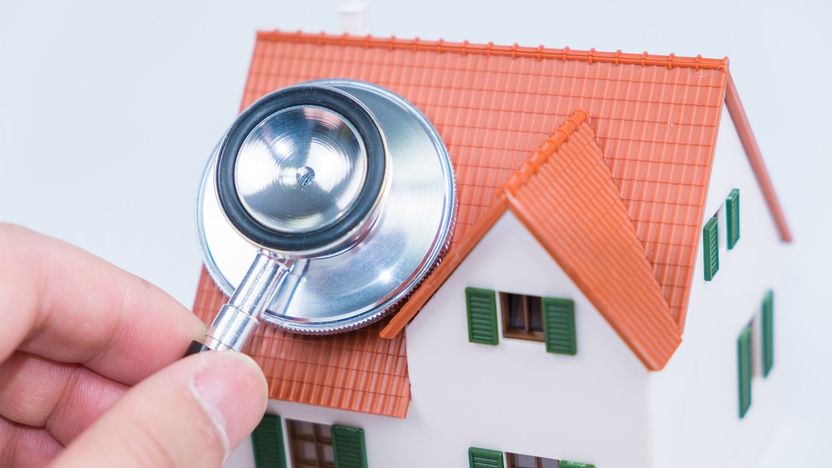
When it comes to maintaining your home, it’s crucial to keep an eye on every nook and cranny. A thorough home maintenance inspection is your best friend in ensuring that your sanctuary remains safe, functional, and comfortable. Whether you’re a new homeowner or a seasoned pro, these top tips will guide you through the process of conducting a comprehensive home maintenance inspection.
The Importance of Home Maintenance Inspection
Before we dive into the nitty-gritty details, let’s understand why a home maintenance inspection is so vital. Regular inspections can help you:
- Prevent Costly Repairs: Identifying issues early can save you money by addressing them before they escalate.
- Ensure Safety: A well-maintained home is a safe home for you and your loved ones.
- Maintain Property Value: Keeping your property in top shape can boost its resale value.
- Increase Energy Efficiency: Regular inspections can help you identify areas where energy is being wasted.
Now that we’ve established the importance of home maintenance inspection, let’s explore the top tips to make sure yours is thorough and effective.
Tip 1: Create a Checklist
Before you start your home maintenance inspection, it’s essential to have a clear checklist in hand. A checklist ensures that you don’t overlook any critical areas of your home. Your checklist should include:
- Exterior Inspection: Roof, gutters, siding, foundation, windows, doors, and landscaping.
- Interior Inspection: Plumbing, electrical systems, HVAC (Heating, Ventilation, and Air Conditioning), walls, ceilings, and floors.
- Safety Checks: Smoke detectors, carbon monoxide detectors, fire extinguishers, and security systems.
Having a comprehensive checklist will help you stay organized and ensure that you don’t miss any crucial aspects of your home.
Tip 2: Schedule Regular Inspections
Consistency is key when it comes to home maintenance inspections. Set a schedule to conduct these inspections at least once a year, if not more frequently. Regular inspections will help you catch issues early and prevent them from becoming major problems.
Tip 3: Safety First
Safety should be your top priority during a home maintenance inspection. Here are some safety precautions to keep in mind:
- Wear Protective Gear: Depending on the task, you may need safety goggles, gloves, or a respirator.
- Use Proper Equipment: Ensure you have the right tools for the job, such as a flashlight, ladder, and multimeter.
- Turn Off Utilities: Before inspecting electrical or plumbing systems, turn off the power and water supply to avoid accidents.
Tip 4: Start with the Exterior
Begin your inspection with the exterior of your home. This is the first line of defense against the elements, so it’s crucial to keep it in top shape.
Roof Inspection
- Check for missing or damaged shingles.
- Examine flashing around chimneys and vents.
- Clear debris from gutters and downspouts.
- Look for signs of water damage on the ceiling.
Siding and Foundation
- Inspect the siding for cracks or gaps.
- Check the foundation for cracks, settling, or moisture issues.
- Ensure that doors and windows are properly sealed and insulated.
Landscaping
- Trim overgrown bushes and trees.
- Repair any damaged walkways or driveways.
- Check for proper drainage to prevent water pooling near the foundation.
Tip 5: Move Inside
Once you’ve completed the exterior inspection, move inside to assess the interior of your home.
Plumbing
- Check for leaks under sinks and around toilets.
- Inspect water heaters for rust or corrosion.
- Test water pressure in faucets and showers.
Electrical Systems
- Examine outlets and switches for damage or wear.
- Test GFCI (Ground Fault Circuit Interrupter) outlets.
- Ensure that circuit breakers are labeled correctly.
HVAC (Heating, Ventilation, and Air Conditioning)
- Change HVAC filters regularly.
- Clean ducts and vents to improve air quality.
- Schedule professional maintenance for your HVAC system annually.
Tip 6: Don’t Forget About Safety
Your home’s safety features are critical to your well-being. Make sure to:
- Test smoke detectors and carbon monoxide detectors.
- Check the expiration date on fire extinguishers.
- Verify that security systems are functioning correctly.
Tip 7: Keep Detailed Records
Document your findings during the inspection. This will help you track any changes or issues that need attention in the future. Use a notebook or a digital app to record your observations, including dates and any maintenance or repairs performed.
Tip 8: Address Issues Promptly
If you discover any problems during your home maintenance inspection, don’t procrastinate. Addressing issues promptly can prevent them from worsening and save you money in the long run. Whether it’s a leaky faucet or a cracked foundation, tackle the problem as soon as possible.
Tip 9: Consider a Professional Inspection
While regular DIY inspections are essential, it’s also a good idea to schedule a professional home inspection every few years. A qualified inspector can provide an in-depth assessment of your home and identify potential issues you might have missed.
Tip 10: Stay Informed
The world of home maintenance is constantly evolving. Stay informed about the latest trends and technologies that can improve the efficiency and safety of your home. Attend workshops, read articles, and consult with experts to ensure you’re up to date on best practices.
Conclusion
A thorough home maintenance inspection is a vital part of responsible homeownership. By following these top tips and conducting regular inspections, you can ensure that your home remains a safe, comfortable, and valuable asset for years to come. Remember, proactive maintenance today can save you from costly repairs in the future. So, roll up your sleeves, grab your checklist, and start inspecting your home today. Your home will thank you for it!


